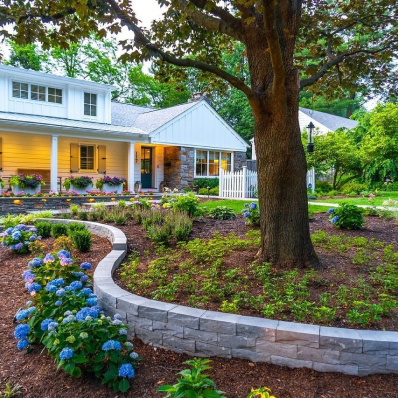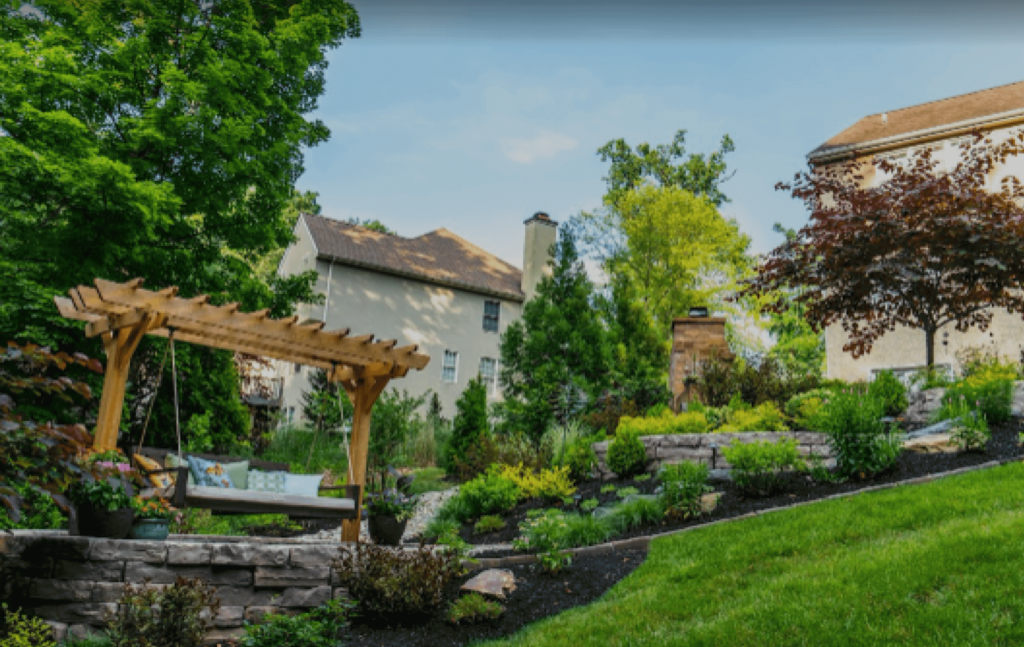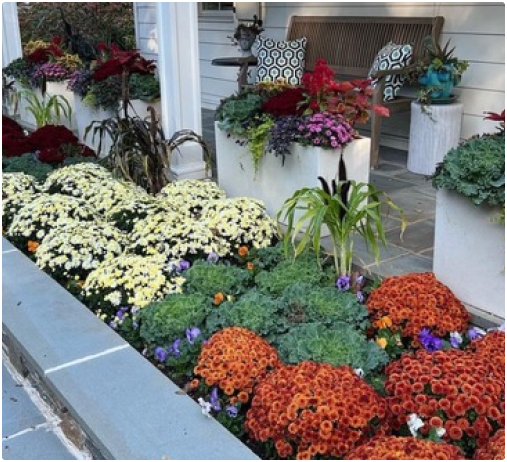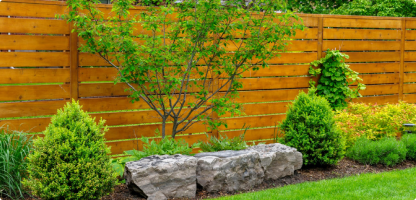Creating a vibrant, green lawn can completely transform your outdoor space, adding instant curb appeal and a place for family and friends to gather. One of the most effective ways to achieve this transformation is through professional sod installation. Unlike seeding, which can take weeks or even months to produce a full lawn, sod gives you immediate results and a lush landscape almost overnight.
However, getting that perfect lawn doesn’t happen by simply rolling out some grass. Without proper planning, soil preparation, and ongoing care, even the best sod can fail to thrive. That’s why understanding each step of the process is essential—whether you’re taking a DIY approach or hiring a professional outdoor living contractor to do the job.
In this comprehensive guide, we’ll walk you through every phase of sod installation—from selecting the right materials to maintaining your new lawn. Whether you’re refreshing your current yard or completing a full exterior remodeling project, this step-by-step breakdown will help ensure success.

Why Sod Is the Fast Track to a Gorgeous Lawn
Sod is an excellent solution for homeowners looking to upgrade their outdoor space quickly and effectively. It offers immediate results that enhance your landscape’s beauty without the long wait that comes with traditional seeding. If you’re on a tight timeline or need to boost curb appeal fast, sod is your best friend.
Unlike seeding, which can be patchy and prone to erosion, sod arrives fully mature and provides instant ground cover. This feature helps to prevent soil erosion, making it ideal for sloped areas or spots where you want to avoid muddy messes. It also acts as a natural weed barrier, significantly reducing the amount of maintenance required during the establishment phase.
Another great advantage of sod is that it allows you to choose the exact grass type that suits your region and lifestyle. Whether you want drought-resistant varieties or soft grass for kids to play on, there’s a sod solution for every need. Working with experienced sod and plant installation services ensures you get high-quality turf suited to your area.
Of course, sod does have a higher upfront cost than seed, but the long-term benefits often outweigh this initial investment. Faster establishment, better aesthetics, and fewer weeds are all reasons why sod is a smart choice for many homeowners.
Ultimately, sod installation is a great way to make a dramatic and positive impact on your landscape, especially when paired with professional plant installation and exterior remodeling efforts.
Gathering Your Tools and Materials for Success
Before jumping into your sod installation, it’s essential to have the right tools and materials on hand. Having everything ready ahead of time will save you from delays and ensure a smoother process from start to finish. Whether you’re doing the work yourself or working with an outdoor living contractor, proper preparation is the key to success.
You’ll need basic tools such as a shovel, rake, wheelbarrow, and garden hose. A soil roller or lawn roller is also incredibly helpful for leveling the ground and pressing the sod into place once it’s laid. Make sure you also have a utility knife or sharp spade for cutting the sod into shape around edges, trees, or garden beds.
As for materials, the most important elements are your topsoil and the sod itself. Make sure to choose high-quality sod suited to your region’s climate and soil type. You’ll also want to consider adding compost or organic matter to improve your soil’s health and drainage before laying the sod.
Optional but helpful tools include a soil test kit and a sod cutter. Testing your soil allows you to know if it needs amendments like lime or fertilizer to create the optimal growing environment. If you’re replacing an old lawn, a sod cutter will make removing the existing grass much easier and more efficient.
Proper tools not only make the job more manageable but also ensure your sod and plant installation efforts deliver long-lasting results. Don’t underestimate the value of preparation—it can make all the difference in creating a stunning landscape.

Laying the Foundation: Soil Preparation Matters
Before any sod is laid, proper soil preparation is crucial for long-term success. This step sets the foundation for your new lawn, and skipping it can lead to uneven growth, poor drainage, and wasted effort. Think of it as the groundwork of any strong structure—your outdoor space deserves a healthy base.
Start by clearing the area of all old grass, weeds, debris, and rocks. If necessary, use a sod cutter to remove existing turf efficiently. This clean slate ensures your new sod makes direct contact with the soil, which is essential for rooting. Don’t skip this step; even a thin layer of dead grass can prevent roots from establishing.
Next, you’ll want to till the top few inches of soil to loosen it up. This helps aerate the soil and makes it easier for new roots to penetrate. At this stage, it’s a good idea to incorporate compost or nutrient-rich soil to enhance fertility and improve drainage. Healthy soil equals healthy sod.
After tilling and amending, rake the soil to create a level surface. Check for high or low spots, which can cause uneven watering or pooling. Proper grading also helps with drainage, so the water moves away from structures and doesn’t collect in undesirable areas.
Finally, lightly water the soil the day before you lay your sod. This helps create a moist but not soggy environment for the sod to begin rooting. The better the soil preparation, the more likely your sod installation will flourish and contribute to a thriving landscape.
Rolling It Out: Installing the Sod Like a Pro
Once your soil is prepped, it’s time for the exciting part—laying the sod! Timing is everything, so make sure your sod is delivered right before installation to keep it fresh. You’ll want to install it immediately for the best results.
Begin along a straight edge such as a driveway, sidewalk, or fence line. Lay each piece tightly against the next, but avoid overlapping them. Stagger the joints like bricks to prevent water channels and erosion. This method ensures a tight, uniform appearance and better durability.
Use a utility knife to trim around curves, flower beds, and hardscaping. Take your time to make clean cuts—this not only improves the look but also allows the sod to root properly along the edges. The better the fit, the better your landscape will look.
Avoid walking on the freshly installed sod. If you need to cross the lawn, use plywood planks to distribute your weight evenly and avoid leaving footprints or indentations. After all the sod is laid, use a lawn roller to press it firmly into the soil. This ensures excellent root contact and helps eliminate air pockets.
Remember, sod is a living plant, and it requires careful handling. Proper installation helps it bond with your soil preparation and sets the stage for vibrant growth in your outdoor space.

Watering and Early Care for Lasting Results
The first few weeks after sod installation are the most critical. Your new lawn needs the right balance of water, care, and attention to take root and thrive. Skip or overdo any of these steps, and you may end up with patchy, unhealthy grass.
Start watering your new sod within 30 minutes of installation. Give it a thorough soaking to help the roots bond with the soil. During the first week, water your sod 2–3 times daily to keep it moist but not soggy. Early morning and late afternoon are the best times to water.
As you move into the second week, reduce the frequency of watering but increase the amount to encourage deeper root growth. The goal is to help your sod adapt to the soil and become more self-sustaining. Check under the edges to ensure it’s starting to root—this is a good sign you’re on track.
Hold off on mowing until the sod is firmly rooted, typically after 10–14 days. When you do mow, be sure the mower blades are sharp, and never remove more than one-third of the grass blade at once. This protects the plant and reduces stress on the lawn.
You may notice a few yellow patches or drying corners—this is normal. Adjust your watering and keep foot traffic to a minimum. With patience and the right care, your new sod will establish itself and become a beautiful centerpiece of your outdoor space.
Long-Term Maintenance to Keep Your Lawn Looking Great
Now that your sod is rooted and growing, it’s time to think about long-term lawn care. Maintaining a healthy lawn is about consistency and knowing how to respond to changes in weather, soil, and usage over time.
Begin with a fertilization plan. About six weeks after installation, apply a balanced fertilizer to provide essential nutrients. Make sure to follow the manufacturer’s guidelines to avoid overfeeding. Feeding your lawn a few times per year helps keep it green and lush.
Regular mowing is essential. Keep your grass at the recommended height for its variety, usually around 2.5 to 3 inches. Don’t cut it too short—it weakens the grass and opens the door for weeds. Sharp mower blades make clean cuts and reduce plant stress.
Watering needs will also change with the seasons. In general, your lawn needs about 1–1.5 inches of water per week, whether from rain or irrigation. If your region experiences drought, water deeply but less frequently to encourage deep roots.
Monitor your lawn for signs of pests, weeds, or diseases. Prompt action helps prevent these issues from spreading. Aeration every year or two can also improve soil health and reduce compaction, especially in high-traffic areas.
Finally, consider integrating your lawn care with broader exterior remodeling goals. From custom plant installation to landscape lighting, your sod is just one part of a beautiful, functional outdoor space.

Frequently Asked Questions About Sod Installation
1. How soon can I walk on new sod?
Wait at least 2–3 weeks before walking on your sod regularly. Light foot traffic may be okay after the first week using boards, but the sod needs time to root.
2. When can I mow my new sod?
Once the sod has established roots—typically 10–14 days after installation—you can mow it. Make sure your mower blades are sharp and avoid cutting it too short.
3. How do I know if my sod is rooting?
Gently tug on a corner of the sod. If you feel resistance, it means roots have started to take hold. This is a good sign that your soil preparation and watering have been effective.
4. What’s the best time of year to install sod?
Spring and early fall are ideal because of moderate temperatures and rainfall. However, with proper watering, sod installation can be done in summer or late fall as well.
5. Should I hire a professional for sod installation?
While DIY is possible, working with a professional outdoor living contractor like Couture Grounds ensures the job is done right—from soil preparation to sod selection and long-term care.

A Lush Lawn Starts with the Right Steps
A successful sod installation can make a dramatic impact on your outdoor space, enhancing your home’s beauty, usability, and value. From detailed soil preparation to diligent early care, every step in the process plays a role in the final result.
While it may seem overwhelming, taking a methodical approach—or partnering with a trusted outdoor living contractor—can simplify everything. You don’t just want a green lawn for a few weeks. You want it to thrive for years to come.
If you’re ready to transform your landscape, look no further than Couture Grounds. Their expert sod and plant installation services ensure that every detail—from soil to sod—is handled with care and precision. Whether you’re refreshing your yard or undergoing a full exterior remodeling project, they’ll help you bring your dream lawn to life.
